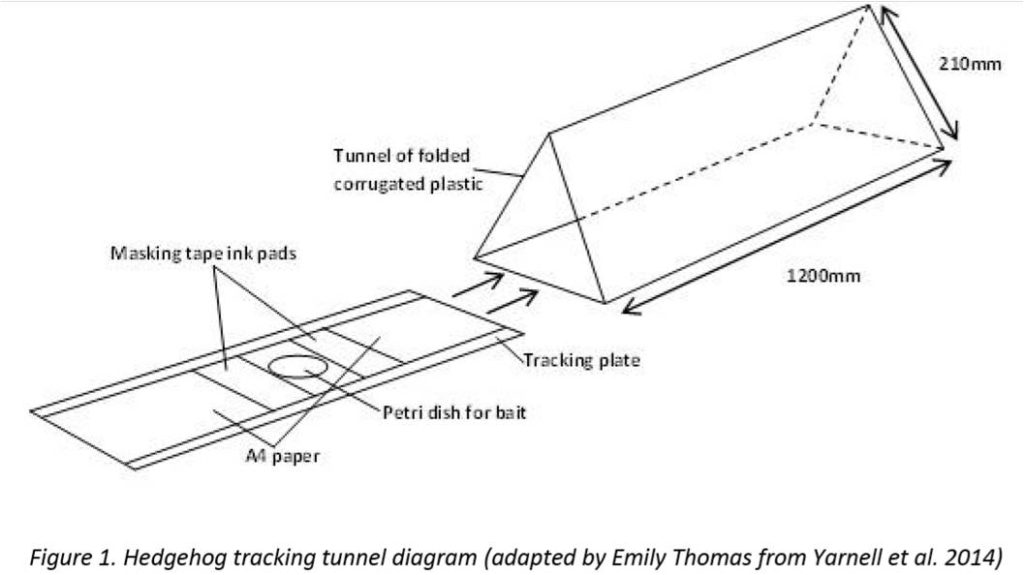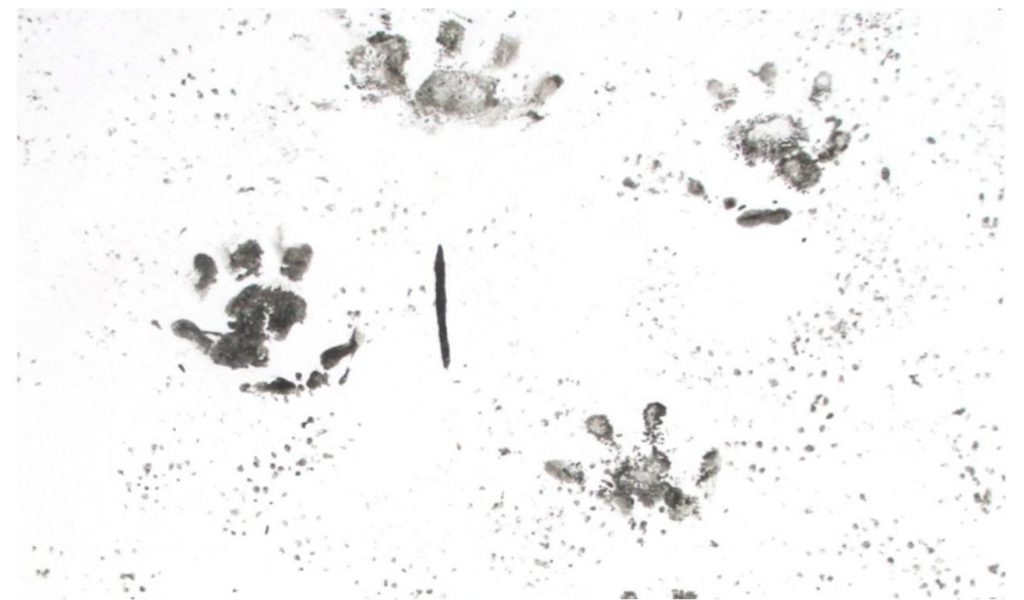Being nocturnal, wild hedgehog sightings are very rare. Their footprint or stools are the only easy way of really proving hedgehogs were ever there at all.
Hedgehog footprint tunnels are a great way to examine what their tracks really look like.
Tunnels are a very cheap way of detecting hedgehog activity in your garden without the need of expensive night cameras.
Plus children get to learn (with a plenty of excitement and anticipation) about the foraging habits of our tiny spiny neighbours.
Contents
How do you make a hedgehog foot print tunnel?
The People’s Trust for Endangered Species has written a specialist guide to making tracking tunnels for hedgehogs.
What does a hedgehog footprint tunnel contain?
There are 4 main parts to the recommended design of tunnel:
- outer shell
- tracking plate with ink strips
- bait area
- paper

An example of what this footprint tunnel looks like when made-up is:

How does a hedgehog tunnel work?
It’s just as simple as it appears.
You have a tunnel which behaves as a temporary shelter for a roaming hedgehog.
The bait sits in the middle of the tunnel to lure the hedgehog to walk down the tunnel.
As they approach the baited petri dish in the middle, the ink-pad coats the hedgehogs feet in black ink.
After feeding, as the hedgehog exits the tunnel, they leave a trail of black footprints across the white paper lining on the floor of tunnel.
Feeding typically occurs in the night according to the nocturnal habits of wild hedgehogs, so make sure your tunnel is set in time for your night time arrivals.
Note: consider that with a food bait inside your tunnel, you might also attract other animals which might give you some false positives to discern.
The best time to take stock of activity will be in the early morning. This will be before other local animals, like cats, disturb your set-up during the heat of the day.
What is the best practice for siting a hedgehog footprint tunnel successfully?
“Radiotracking studies have shown that hedgehogs use linear features to navigate (e.g. Hof and Bright)…”
For best results – lay your tunnel parallel to the perimeter fence, wall of your garden, hedges or ledges.
Place a few tunnels in convenient places like this throughout your garden in shelters areas.
Make sure the entrance of the tunnel is flush with the ground & without a step.
Ultimately, getting good results with footprint tunnels takes experimentation. Trial and error – in order to get it right.
Examples of hedgehog footprints – using tunnels
Hedgehogs have a different number of toes on the front vs the back feet:
- 4 toes on the front foot
- 5 toes on the back foot (*no opposable thumbs – so the don’t climb, but only walk or run)
Adult hedgehog footprints

Baby hedgehog footprints

What other animals could you attract when laying a hedgehog footprint tunnel?
Take a look and see if you can guess on the animal by the print…



Do you have any experience of using footprint tunnels?
Would you like to share a design on a home-made one you’ve tried before?
Join the conversation below.
References:
https://ptes.org/wp-content/uploads/2018/05/Guidance-for-surveying-hedgehogs-2018.pdf